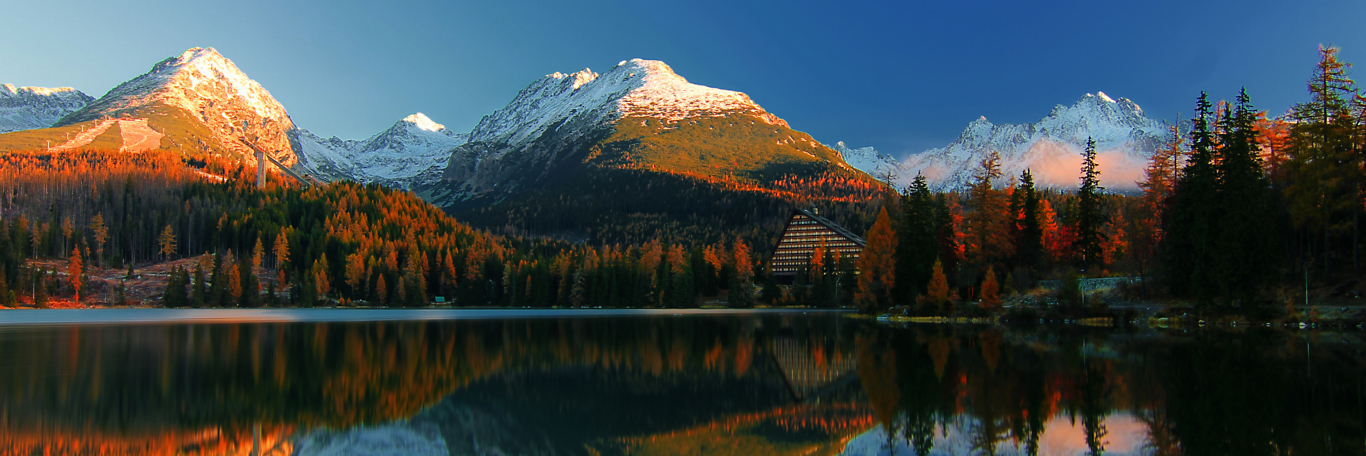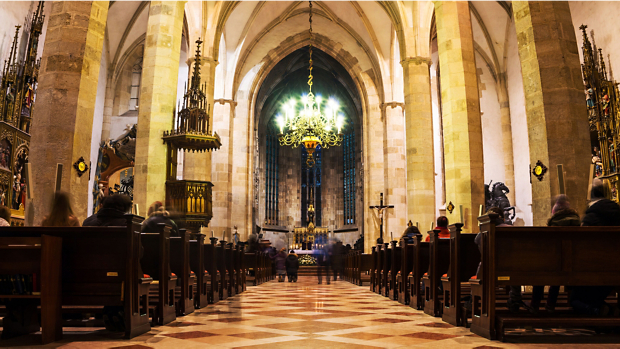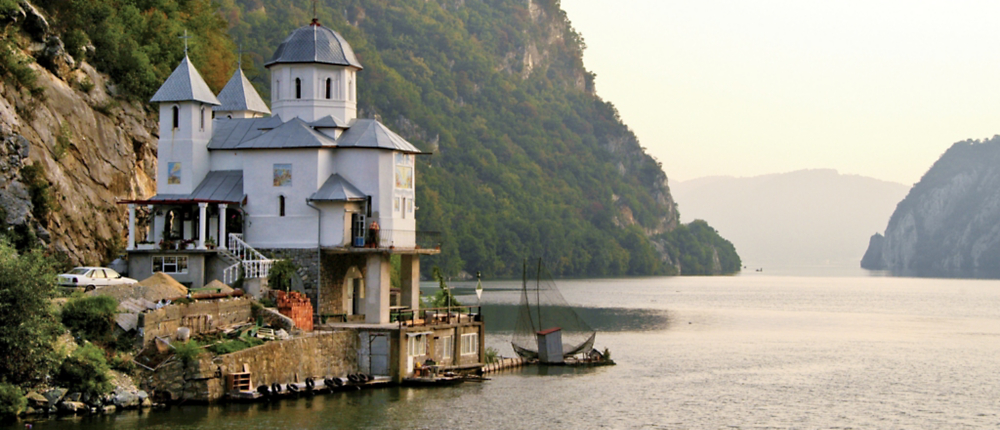You’re receiving this message because your web browser
is no longer supported
We recommend upgrading your browser—simply click the button below and follow the instructions that will appear. Updating will allow you to accept Terms and Conditions, make online payments, read our itineraries, and view Dates and Prices.
To get the best experience on our website, please consider using:
- Chrome
- Microsoft Edge
- Firefox
- Safari (for Mac or iPad Devices)

slovakia
Discover Our Trip
Find out more about the trip, including activity level, pricing, traveler excellence rating, included meals, and more

Spend 2 days in Slovakia on
Romantic Blue Danube: Budapest to Prague
River Cruise
Hungary: Budapest | Slovakia: Bratislava | Austria: Vienna, Krems, Linz | Czech Republic: Cesky Krumlov, Prague
Trip Details
Add Trip
including international airfare
per day
*This information is not available for our trip extensions. You must reserve the main trip to participate on this extension.
**This information is not currently available for this trip. Please check back soon.
You may compare up to Adventures at a time.
Would you like to compare your current selected trips?
Yes, View Adventure ComparisonSlovakia: Month-By-Month
There are pros and cons to visiting a destination during any time of the year. Find out what you can expect during your ideal travel time, from weather and climate, to holidays, festivals, and more.
Slovakia in December-February
After the last of the autumn leaves fall across heavily-forested Slovakia, cold descends and snow moves in. Winter is chilly here—about 30 degrees Fahrenheit on average—and very quiet, as few tourists visit during the winter months. In Bratislava, the holidays bring teeming Christmas markets to each of the city's central squares, where red-and-white stalls sell all manner of traditional Slovak cuisine and locally-made crafts. Even after the holidays end, central Bratislava's old pastel buildings, narrow streets, and orange-tile roofs are particularly charming as snowflakes fall.
Outside of Bratislava and the High Tatras, most of Slovakia's tourist sites close during the winter months.
Holidays & Events
- December 25: Christmas
- December 31-January 1: New Year's Eve is a massive party in central Bratislava, and a popular 10k race the following day rings in the new year.
- January 6: The Feast of the Epiphany is an important holiday in Slovakia, and it marks the beginning of Fašiangy, or Slovakian Carnival, which lasts until the beginning of Lent.
Must See
The High Tatras span the Slovakia-Poland border, and winter is a particularly beautiful time to visit these alpine peaks. Winter sports like cross-country and downhill skiing are popular at several mountain resorts, and winter hiking is also an option. During the holidays, Bratislava turns up the charm with cozy Christmas markets that rival the more commercial festivities in Western Europe.
Watch this film to discover more about Slovakia
Slovakia in March-May
Warming days herald the arrival of spring in Slovakia, from a high of around 43 degrees Fahrenheit in March, to highs in the 60s in May. Flowers bloom across the country and fruit trees, which line Slovak roads, send out heady blossoms. Bratislava's botanical garden opens in early April every year, and cafes and restaurants in the pedestrian center set up their patios and sidewalk seating areas in anticipation of long summer days.
With mild temperatures and fewer tourists than the summer months, this can be an ideal time to visit Slovakia.
Holidays & Events
- Easter celebrations in Slovakia bring old traditions to the forefront, including the practice of dousing young women with buckets of water to impart vitality and strength.
- Last week of April: Fjuzn is Bratislava's Festival of Minorities, featuring workshops, concerts, performances, and exhibits highlighting the cultures of the many minorities in Slovak society.
- May 1: International Worker's Day is similar to the American Labor Day. Some businesses close for the day.
- May 8: Victory in Europe (VE) Day is a national holiday in Slovakia, marking the surrender of Nazi Germany to Allied forces.
Watch this film to discover more about Slovakia
Slovakia in June-August
Summers in Slovakia are short and hot, with an average temperature of 85 degrees Fahrenheit. Occasional heat waves bring the mercury up to 95 degrees Fahrenheit in the lowlands, while the High Tatra mountains are more comfortable in the mid-70s. Frequent showers pass through Slovakia in July, the rainiest month of the year. Of course, summer is the busiest month for tourism in Slovakia.
Holidays & Events
- June: Bratislava's Junifest is Slovakia's answer to Oktoberfest—a celebration of beer that also features a variety of concerts.
- July 5: Slovaks commemorate their patron saints with a national holiday on Saints Cyril and Metodius Day.
- August 29: National Uprising Day recognizes the 1944 armed uprising against German occupation of Slovakia.
Must See
Summer is a popular time to visit Slovensky raj ("Slovak Paradise") National Park, a forested enclave of narrow gorges, caves, waterfalls, and meadows. The unique topography, with plenty of shade and rushing water, provides a break from the heat and plenty of opportunity for adventure.
Watch this film to discover more about Slovakia
Slovakia in September-November
With forests covering so much of Slovakia, fall colors sweep across the landscape in September and October. Temperatures cool a bit—dipping into the low 40s Fahrenheit by late November. Generally, the weather remains warm and stable, and since tourist traffic dies down after summer ends, this is an excellent time to visit. North of Bratislava, where vineyards stretch across low hills, autumn is the time for grape harvest and wine festivals. In the city, classical and jazz festivals bring music to well-established concert venues, and independent rock festivals enliven the streets.
Holidays & Events
- September 1: Slovak Constitution Day is the country's national holiday.
- November 17: Struggle for Freedom and Democracy Day commemorates student protests against Nazi occupation and later Communist rule in Czechoslovakia, and is now celebrated in both Slovakia and the Czech Republic.
Must See
Across Slovakia, stunning autumn foliage provides a beautiful backdrop for stately castles and charming cobblestone villages. Grapevines turn a burnished red-gold during the harvest as well. When the weather turns cold, Bratislava's cozy coffeehouses and hip underground bars are a welcome respite from wind and rain.
Watch this film to discover more about Slovakia
Average Monthly Temperatures
High Temp Low Temp
Slovakia Interactive Map
Click on map markers below to view information about top Slovakia experiences
Click here to zoom in and out of this map
*Destinations shown on this map are approximations of exact locations
Michael's Gate

Those looking for the best views of Bratislava's picturesque Old Town seek out majestic Michael's Gate—a 15th-century tower rising above the cityscape. Crowned with an elegant Baroque-style copper roof, visitors who climb all seven floors to the top of the tower will be treated to a superb vantage point of the city, including massive Bratislava Castle. At the very top of the tower, a statue of the archangel Michael, for whom the structure is named, can be found slaying a dragon.
Experience Michael's Gate with us on:
Bratislava's Old Town

Though it has only been a capital city since 1993, Bratislava has been a destination since the Old Town was rising in the 14th and 15th centuries. Its Old Town Hall and Neo-classical Archbishop’s Palace transport visitors across the centuries, as does Gothic St. Martin’s Cathedral, where the Kings and Queens of the Habsburgs were crowned. Compact in size, Old Town is perfect for a stroll down to the banks of the nearby Danube. Visitors are only steps away from the spire-dotted neighborhoods that boomed in the 18th century, when artists and entrepreneurs filled the city’s cafés and corridors. Bratislava’s leisure heyday was interrupted by the Socialist era, and you can still see heavy-looking architecture and political statues that call to mind those years. But that era is just a memory now, and the Old Town feels new again.
Experience Bratislava's Old Town with us on:
Bratislava Castle

The hills above what is now Bratislava have been settled since the Stone Age, when the Celts called the land Oppidum. But the first reference to Bratislava in writing comes from 907, when a military fortification began to rise. Over the next 800 years, the castle that we see today took shape, its final elements put in place by Maria Theresa in 1768. With its white walls reflecting the light and four red-roofed towers, it looks like a fairytale illustration. Visitors seek out its Crown Tower for the best views of the city and the winding Danube beyond. Inside, the castle boasts fine art, like the Baroque Assumption of the Virgin Mary, and historical collections from the Middle Ages.
Experience Bratislava Castle with us on:
St. Martin's Cathedral

Between 1563 and 1830, there was nowhere more regal in (what was then) the Kingdom of Hungary than St. Martin’s Cathedral of Bratislava. This was where king and queen after king and queen were crowned, 19 in succession, including the famed Maria Theresa. Built during the 13th and 14th centuries, and set into the town walls as part of the fortifications, the cathedral had been enlarged and expanded upon by the time it was coronation central. Despite boasting a solid gold crown atop its spire, the interior was originally fairly sparse, letting the pomp and circumstance of royalty provide the flash. Today, the cathedral contains Baroque and Gothic artwork, huge altars, an underground crypt with catacombs, and one of those legendary crowns, a model from the 19th century.
Experience St. Martin's Cathedral with us on:
Featured Reading
Immerse yourself in Slovakia with this article
ARTICLE
See how the Danube is home to a unique mélange of historical influence that spans nearly 2,000 years.
Flowing through History: The legacy of the Danube River

by Laura Chavanne from Currents
It is known as the most “multinational” river in the world, touching ten different countries and passing through four capital cities. It is the second-longest river in Europe (after the Volga), covering more than 1,700 miles from the Black Forest in Germany to the Black Sea in Romania. And ever since Roman times, it has served as both a connector of cultures and a physical boundary between them—facilitating both trade and transport and the preservation of cultural diversity.
More than just the place where “East meets West,” the Danube River is home to a unique mélange of historical influence that spans nearly 2,000 years.
The rise and fall of Rome
At the height of the Roman Empire, a series of fortifications known as the Limes Germanicus (Latin for “Germanic Frontier”) separated the Roman civilization from the so-called “barbarian” Germanic tribes who lived to the north. The creation of this boundary began around AD 9, when Emperor Augustus was shaken by a devastating Roman defeat at the hands of Germanic warriors.
By the third century AD, the Danube marked Rome’s northernmost border—but the empire was already in decline. Some Germanic tribes were permitted to settle south of the river, within Roman territory—but this initial attempt at diplomacy eventually gave way to revolts. Between AD 400 and 454, a wave of Germanic invasions crossed the Danube and infiltrated the weakened empire, which greatly contributed to its complete collapse by AD 476.
Today, the remains of the Limes Germanicus can still be seen along the banks of the Danube. In the center of Regensburg, the ruins of the Porto Praetoria are among the largest remaining Roman constructions in Germany. Dating from AD 179, this gate once marked the path from the Danube River into the Castra Regina military camp. Such dramatic physical evidence may not exist in the great cities of Vienna, Belgrade, and Budapest—yet they all grew out of Roman settlements on the Danube.
Commerce and conquerors
In September 2012, Hungarian archaeologists discovered a curious object at the bottom of the Danube, about 18 miles north of Budapest. Partially buried in mud near the riverbank was the form of a sunken ship—and a medieval-era pot was found among the wreckage. While the wreck has yet to be excavated, archaeologists are hopeful that its contents will offer new insight as to the nature of traffic and commerce along the Danube during the Middle Ages.
Following the collapse of the Roman Empire, the Danube became an important trade route that connected first the Byzantines and later the Ottomans with the kingdoms of Western Europe. It also offered Western Crusaders a pathway to the Holy Land via the Black Sea. And until the 19th century, it was a crucial naval channel for various Central European empires and nations. The Treaties of Paris and Versailles—in 1856 and 1919, respectively—recognized the waterway’s significance, promoting free navigation along the river and establishing it as an international waterway.
While it’s rare today for a river to be considered international waters, the Danube still retains this designation. All of the countries it flows through or borders—in particular, the otherwise landlocked nations of Austria, Hungary, Serbia, and Slovakia—rely on the Danube for fishing, hydropower, irrigation, and freight. In the 20th century, two canals were completed to help facilitate traffic on the Danube: the Danube-Black Sea Canal, which provided a more direct route to the Black Sea through Romania in 1984; and the Main-Danube Canal, which linked the Danube with the Rhine via Germany in 1992.
Taming the rapids
The German poet Friedrich Hölderlin famously wrote of the Danube’s changing personality, calling it “a refreshing, melodious river, sometimes foaming with high spirits, at other times dreaming serenely.” Until the 19th century, its spirits foamed notably higher than they do today. A series of dams, locks, and artificial channels has helped to tame its wilder passages—with the most ambitious located along the border between Romania and Serbia.
This channel between the Carpathian and Balkan mountains once threatened sailors with areas of rapids that roiled between narrow gorges. Begun in 1964 and completed in 1984, the Iron Gates hydroelectric project raised the water level by 130 feet. Two dams and two hydroelectric power stations flank this swollen section of river that now flows peacefully through spectacular gorges—which may not be as dramatic as they were before the project, but are beautiful nonetheless.
Connectors of cultures
Just as the Danube is known as the queen of Europe’s rivers, Budapest is the undisputed Queen of the Danube. A first-century Roman settlement that later played host to Huns, Mongols, and Turks, Budapest is one of Europe’s oldest cities—but in a sense, it is also one of the youngest. Modern Budapest didn’t exist until 1873, when historic Buda on the west bank of the Danube joined with industrial Pest on the east under the dual monarchy of Austria-Hungary. From World War II to Soviet occupation and the fall of the Iron Curtain, the city has seen riots and revolution, reclamation and resurrection.
And just as the Danube flows peacefully today, Budapest has thrived under democracy. It is celebrated as one of Europe’s most beautiful cities, and an emerging industrial and economic center.
In many ways, the city is a microcosm of the river that flows through it: a cultural connector, linking Eastern and Western Europe … bringing together historical influences from ancient times to the present … and flowing steadily toward the future.
Traveler Photos & Videos
View photos and videos submitted by fellow travelers from our Slovakia trips. Share your own travel photos »
